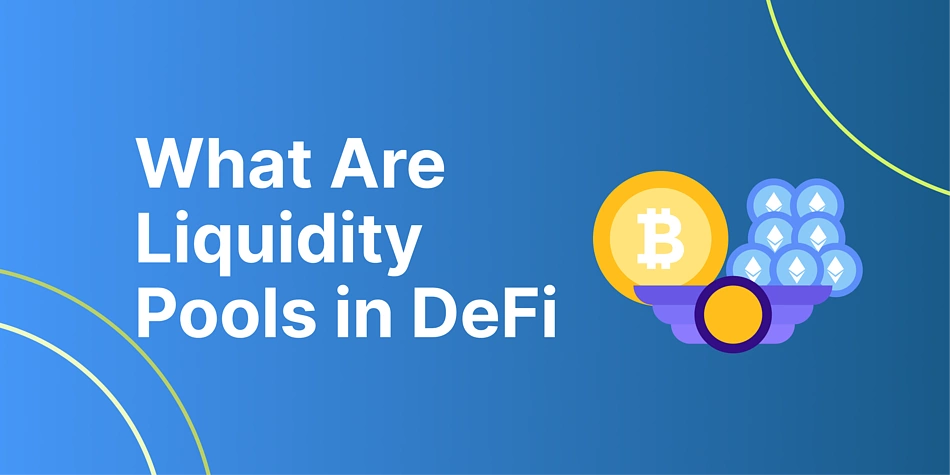Liquidity Pools in DeFi: How They Work & Why They Matter
Liquidity pools are the backbone of decentralized finance (DeFi), facilitating everything from token swaps to lending protocols. These pools enable seamless transactions on decentralized exchanges (DEXs) without the need for traditional market makers, ensuring 24/7 liquidity. Understanding their mechanics, benefits, and risks is crucial for anyone navigating the DeFi landscape.
What Are Liquidity Pools & How do they work?
A liquidity pool is a smart contract that holds a reserve of two or more cryptocurrency tokens, allowing for automated trading without intermediaries. Unlike traditional finance, where an order book matches buyers and sellers, liquidity pools enable instant trades by leveraging automated market makers (AMMs)—a system that dynamically adjusts prices based on supply and demand.
Liquidity pools operate through a simple yet powerful mechanism:
- Liquidity Providers (LPs): Users deposit pairs of tokens into the pool, ensuring continuous liquidity. In return, they receive a share of the trading fees.
- Automated Market Makers (AMMs): These smart contracts use mathematical formulas to determine asset prices. Uniswap’s constant product formula (x * y = k) is the most widely known model, ensuring that token ratios remain balanced.
- Trading Process: When a user swaps tokens on a DEX, the trade is executed against the liquidity pool instead of matching a direct buyer or seller. The AMM recalculates prices in real time, ensuring that liquidity is always available.
Types of Liquidity Pools
Different DeFi platforms have introduced variations of liquidity pools, optimizing them for specific use cases:
- Traditional Liquidity Pools: The standard 50/50 token ratio pools, used by platforms like Uniswap v2 and SushiSwap.
- Stablecoin Pools: Designed for low-slippage trades between stable assets, such as Curve Finance’s USDC/DAI/USDT pools.
- Multi-Asset Pools: Platforms like Balancer allow liquidity providers to deposit multiple assets in customizable ratios.
- Single-Sided Liquidity: Bancor introduced pools where users can provide liquidity with just one token, reducing impermanent loss.
- Concentrated Liquidity: Uniswap v3 enables LPs to concentrate their liquidity within specific price ranges for greater capital efficiency.
Popular Liquidity Pool Platforms
As DeFi expands, several DEXs have become synonymous with liquidity pools:
- Uniswap: The pioneer of AMM-based DEXs, offering easy access to liquidity pools.
- Curve Finance: Optimized for stablecoin trading with minimal price slippage.
- Balancer: Allows customized multi-asset pools with different weightings.
- SushiSwap: A Uniswap fork that introduced additional yield farming incentives.
- PancakeSwap: The leading DEX on the Binance Smart Chain (BSC), known for low fees.
Additionally, DEX aggregators such as 1inch and Matcha integrate multiple liquidity pools, offering traders the best possible prices across platforms.
Risks of Liquidity Pools
While liquidity pools revolutionize decentralized trading, they come with inherent risks:
- Impermanent Loss: When the price ratio of pooled assets changes significantly, LPs may suffer losses compared to simply holding the tokens. This occurs because one asset in the pool becomes disproportionately allocated as traders arbitrage price differences.
- Smart Contract Vulnerabilities: Bugs or exploits in DeFi protocols can lead to massive fund losses, as seen in the Harvest Finance hack, which drained $33.8 million in 2020.
- Rug Pulls: Malicious developers can create fraudulent liquidity pools, attract deposits, and then drain liquidity, leaving investors with worthless tokens. The AnubisDAO rug pull resulted in a $60 million loss in 2021.
- Regulatory Uncertainty: Governments are still formulating laws around DeFi, and increased regulation could impact liquidity pool operations.
Security Measures for Liquidity Pools
To mitigate risks, participants should adopt best practices for DeFi security:
- Use Audited Platforms: Stick to well-established DEXs with multiple security audits, like Uniswap and Curve Finance.
- Implement Multi-Signature Wallets: Large liquidity providers should use multi-signature setups to protect against unauthorized withdrawals.
- Consider Insurance: Protocols like Nexus Mutual offer insurance against smart contract failures.
- Diversify Holdings: Avoid placing all assets in a single liquidity pool to reduce risk exposure.
- Stay Informed: Keep up with DeFi news, monitor projects for security updates, and avoid pools with suspicious tokenomics.
The Bottom Line
Liquidity pools have become a cornerstone of DeFi, enabling seamless decentralized trading and yield-generating opportunities. They offer democratized market access, eliminating traditional financial intermediaries. However, risk management is essential, as vulnerabilities in smart contracts and market volatility can impact liquidity providers.
As DeFi continues to evolve, liquidity pools will remain a fundamental innovation, pushing the boundaries of decentralized finance. For traders and investors looking to capitalize on DeFi, understanding liquidity pools is non-negotiable.🔍 Get more insights into the evolving AI and tech landscape with MINTALPHAA.
🎙️ Stay updated on the latest crypto and tech trends through our Spotify podcast
